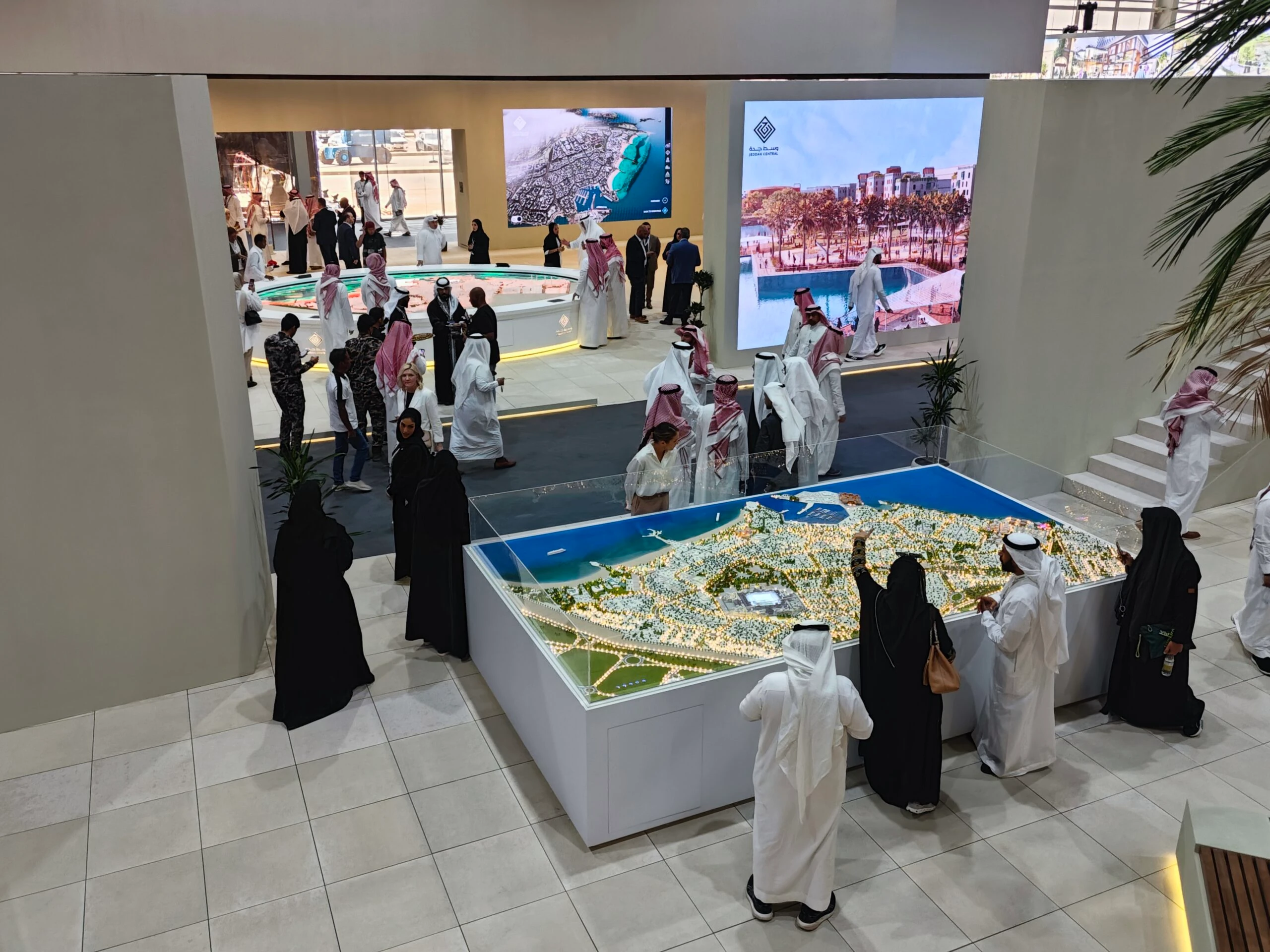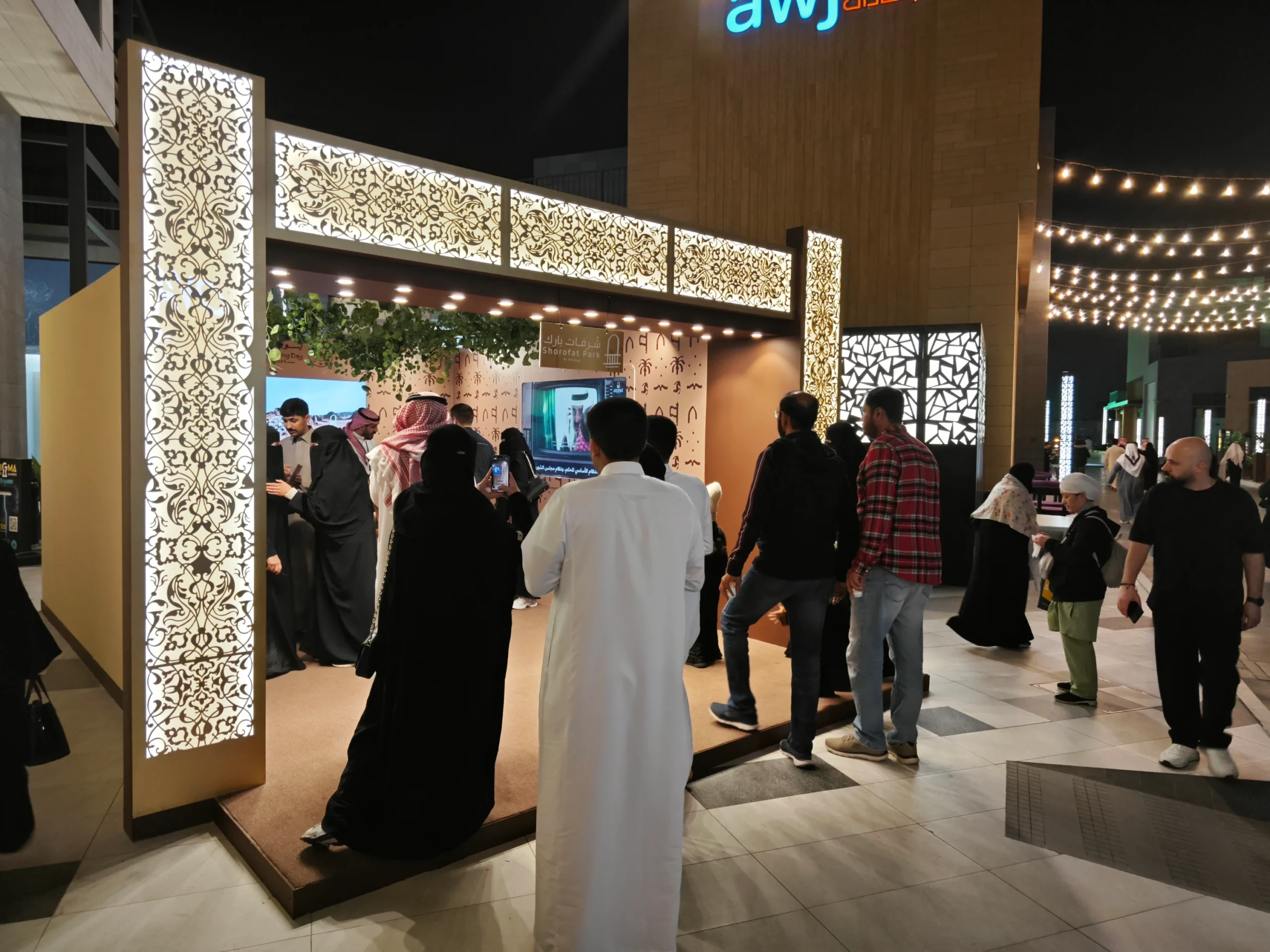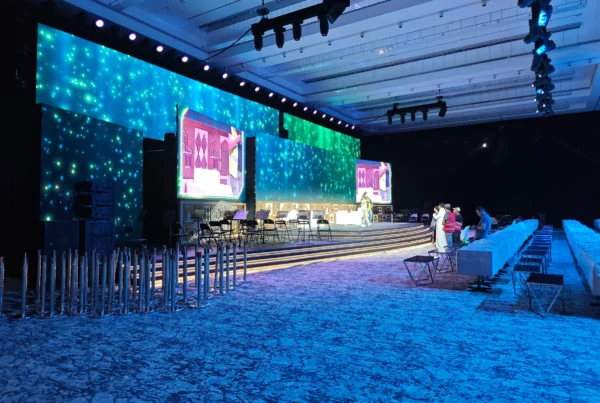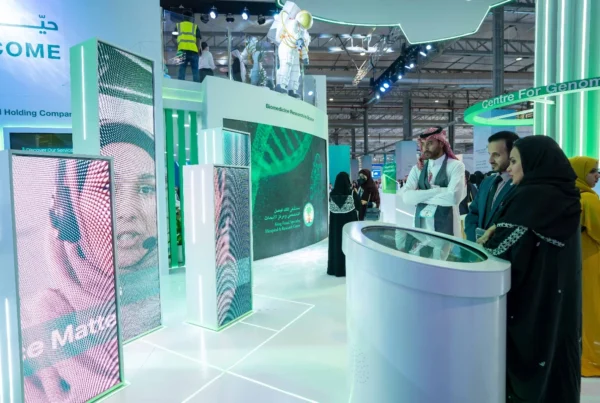The days of static brochures, passive scale models, and generic PowerPoint slides dominating real estate events are rapidly fading. In today’s fast-evolving marketplace, interactive exhibitions—equipped with digital twin frameworks, AR/VR presentations, and occupant analytics—are transforming the way developers connect with potential buyers. Whether aiming to market off-plan condominiums, commercial towers, or entire mixed-use communities, immersive technology offers dynamic ways to engage audiences, spark emotional bonds, and streamline the decision-making process.
This article delves into how user-centric strategies, occupant analytics, and event-like brand moments create a more compelling narrative for property showcases. You’ll find a comprehensive overview of the essential tech components, insights into off-plan marketing, real-world examples of interactive success, and actionable steps to set up your own interactive exhibition. By adopting these methods, real estate developers can meet (and often exceed) the rising expectations of an increasingly tech-savvy and experience-driven audience.

1. The Shift in Real Estate Exhibitions: Why Interactivity Matters
1.1 Traditional Approaches and Their Shortcomings
For decades, property fairs and sales centers relied on physical scale models, slide presentations, and static 3D renderings. While these methods proved adequate in an era less demanding of immersive media, buyers today expect more. Large-scale developments, complex architectural details, and global competition have all driven up the standard for demonstrations:
-
Limited Buyer Engagement: Conventional booths often leave visitors flipping through glossy brochures with minimal real-time interaction.
-
Lack of Emotional Resonance: Data-laden fact sheets rarely convey the lifestyle or atmosphere a future property aims to cultivate.
-
Difficulties for Off-Plan: Unbuilt or partially completed sites can seem abstract in 2D layouts, leaving potential investors or homebuyers uncertain about the end result.
This shortfall led many developers and event coordinators to seek more immersive solutions. As confirmed by real estate trend reports from Knight Frank and McKinsey, interactivity enriches brand perception, fosters emotional ties, and, crucially, accelerates the buyer’s decision.
1.2 Modern Buyers Demand Immersive Experiences
Property fairs now resemble event-like spectacles, full of interactive displays and multi-sensory exhibits. From VR tours of penthouse layouts to occupant analytics that refine each user’s journey in real time, developers can stand out by enabling guests to do more than just look—they experience the property’s atmosphere. This approach resonates with why experiential marketing resonates with Gulf audiences, underscoring how emotional connections can make or break a sale in a crowded marketplace.
2. Core Technologies Fueling Interactive Exhibitions
2.1 Digital Twin Foundations
A digital twin merges 3D modeling with real-time or near-real-time data, effectively creating a “living” virtual clone of a property or entire development. Instead of a static 3D walkthrough, visitors can manipulate floor plans, toggle day/night lighting, or watch occupant flow simulations. If you’re looking to see how such systems operate, check out digital twin solutions, which detail how advanced frameworks can represent an entire building’s layout and features dynamically.
Key Advantages of Digital Twins for Exhibitions
-
Interactive Visualization: Potential buyers experiment with design changes or furnishings while seeing immediate feedback.
-
Scenario Testing: Developers can demonstrate various occupant densities, resource usage, or design adjustments, offering a more detailed real-world sense of a future project.
-
Data-Driven Insights: Attendee interactions within the digital twin environment yield occupant analytics—like preferences for certain layouts—that refine marketing strategies.
2.2 AR, VR, and Beyond
Immersive technologies push interactive booths far beyond the typical slideshow:
-
VR Headsets: Let visitors “walk through” a future apartment or roam the courtyard of an off-plan commercial hub, providing a sense of scale missing from 2D drawings.
-
AR Overlays: Could allow prospective buyers to point a tablet at a scale model and see layers like interior layouts, occupant flow, or potential finishing materials.
-
Gesture-Responsive Screens: Encouraging more organic user engagement, letting them zoom in on unit details or flip through various views with simple hand motions.
By integrating these features with occupant tracking, developers can track how participants engage, revealing what design aspects spark the most excitement or lead to more deposit inquiries.
2.3 Occupant Analytics
Real estate developers used to rely on broad visitor data—like total foot traffic. Now, occupant analytics measure dwell time in specific property sections, identify popular finishing schemes, or gauge which AR features get repeated use. This type of immediate feedback, akin to advanced user tracking in an interactive historical puzzle or an immersive brand event, informs developers about buyer priorities and how best to optimize future property showcases.
3. User-Centric Exhibitions: Mapping the Buyer Journey
3.1 The Importance of User-Centric Design
Rather than dumping visitors into a random cluster of property visuals, user-centric design crafts an exhibition that flows smoothly. From the initial greeting to final feedback, each stage offers intuitive next steps:
-
Orientation & Greeting: A friendly staff member or kiosk welcomes guests, perhaps with occupant analytics capturing name and interests for tailored show flow.
-
Immersive Exploration: Visitors engage with interactive VR setups or digital twin displays, exploring the property in a guided yet flexible manner.
-
Personalized Follow-Up: Upon leaving, occupant data can highlight which units or design finishes caught each visitor’s eye, prompting a strategic email or phone call with relevant offers.
For deeper guidance on structuring these phases, consider the insights on user-centric strategies from our own blog.
3.2 Cultural Sensitivities
In regions like the GCC, respecting local customs—like modesty guidelines or gender segregation preferences—can be key to a comfortable environment. Planners might integrate separate VR stations or ensure staff are trained in cultural awareness. These details, though subtle, can shape how approachable and welcoming an interactive exhibition feels.
4. Off-Plan Property Sales: Elevating Buyer Confidence with Immersive Solutions
4.1 Overcoming Abstract Blueprints
An off-plan project often struggles with intangible concepts—an empty plot or partially built structure can be hard to visualize. Immersive setups fix this by letting potential buyers:
-
Virtually Explore Floor Plans: Adjusting room shapes, toggling color schemes, or seeing how natural light might filter in at different times of day.
-
Simulate Occupant Flows: Through occupant analytics or scenario-based demos, showcasing how a building’s layout supports various usage patterns (e.g., families, professionals).
By bridging imagination and reality with immediate, dynamic visuals, prospective clients gain the confidence to commit earlier—a crucial advantage for developers needing to secure pre-sales.
4.2 Enhancing Emotional Ties
When guests can “tour” a future development’s clubhouse or compare living room layouts in real time, they form an emotional bond to the space. As detailed in how digital twin technology is transforming real estate sales, bridging intangible concepts with an immersive, user-directed environment fosters excitement, accelerating the path from curiosity to deposit.
5. Building Emotional Resonance: Event-Like Brand Experiences
5.1 Borrowing from Experiential Marketing Tactics
Real estate exhibitions can feel more akin to brand “events,” merging property reveals with interactive demos, occupant analytics, and cultural festivities—like a local-themed welcome lounge or specialized coffee corner. This approach tracks closely with why experiential marketing resonates with Gulf audiences, reinforcing the emotional threads that tie brand image and buyer loyalty.
5.2 Inviting Wider Audiences
Immersive displays aren’t solely for those physically attending property expos. Developers can broadcast occupant analytics or AR-based show flows online, welcoming a global audience to “tune in.” This synergy helps potential overseas investors or diaspora communities experience off-plan developments in real time, flattening geographical obstacles that once hampered real estate marketing.
6. Case Study: Interactive Historical Puzzle and Other Projects
6.1 A Heritage Puzzle Goes High-Tech
While designed for cultural events, the interactive historical puzzle for Saudi Founding Day exemplifies how advanced interactive elements can enthrall participants with local context. Real estate developers might draw parallels, using puzzle-like VR elements in property exhibits or occupant flow–based quizzes to keep visitors deeply involved in a brand’s story.
6.2 New Initiatives in Jeddah
Consider referencing our new project in Jeddah crafting a cutting-edge customer experience. Although it specifically highlights a cutting-edge approach for occupant engagement, the conceptual underpinnings—layering user-centric design, occupant analytics, and interactive visuals—can inspire real estate exhibitions. This synergy proves especially valuable in marketing developments anchored in Jeddah’s coastal expansions or historical neighborhoods.

7. AI-Driven Personalization: The Next Frontier of Interactive Exhibitions
7.1 How AI Shapes Buyer Journeys
In occupant analytics, AI can map visitors’ exhibited preferences—like favoring larger balconies or certain aesthetic touches—and highlight relevant property configurations. This real-time adaptation might even propose specific finishing materials or occupant usage scenarios, personalizing the show floor for each prospective buyer. Insights from AI Takes Center Stage: How 2025’s AI Revolution Will Transform the Digital Interactive Experience suggest occupant data can significantly streamline the sales funnel.
7.2 Practical Implementation
To harness occupant analytics effectively, developers can embed sensors or occupant-tracking software within VR or AR stations. If visitors show repeated interest in, say, certain premium finishing details, staff can then present on-the-spot promotions or schedule a deeper conversation. By bridging occupant data with personalized offers, these advanced methods push interactive exhibitions far beyond generic property fairs.
8. Practical Steps for Developers: Implementation Tips
8.1 Clarify Goals
Before diving into advanced solutions, define your objective. Is it:
-
Accelerating Off-Plan Sales for a newly planned community?
-
Brand Positioning that emphasizes innovation and occupant comfort?
-
International Outreach, capturing interest from overseas investors?
The aims you prioritize shape the layout, occupant analytics strategy, and type of immersive hardware or software needed.
8.2 Start with a Pilot Approach
Given budget constraints or limited in-house expertise, piloting a smaller interactive corner or single VR station at a property expo can yield crucial occupant analytics and user feedback. Once you’ve validated the concept’s ROI—like higher deposit or lead conversion rates—expand to a full-scale immersive exhibition.
For more on scaling solutions effectively, see how we advise cost-effective expansions in scaling up your strategy: best practices for implementing a 2025 digital interactive experience on any budget.
8.3 Collaborate with Experts
Attaining synergy between occupant analytics, user-centric design, and cultural authenticity typically requires cross-functional teams. If you need specialized assistance—be it for digital twin programming, VR content creation, or occupant analytics integration—consider tapping into smart interactive solutions, where professionals can help orchestrate a seamless environment.
9. Challenges and Cultural Considerations
9.1 Budget & Technical Requirements
Advanced occupant analytics or VR setups can demand significant hardware, software, and staff training. Even top-tier developers may find it overwhelming to run these setups 24/7. Splitting exhibits into cost tiers—basic AR overlays versus full-blown VR simulators—helps manage expenses. Over time, occupant analytics gleaned from pilot runs or smaller exhibitions can justify further investment.
9.2 Local Norms
Depending on the region or target audience, interactive exhibitions may need to adapt to cultural guidelines, such as providing separate or privacy-sensitive VR spaces for female visitors in some contexts. Similarly, language options (Arabic plus English or others) ensure inclusivity. Integrating these details might seem small, but they significantly impact comfort and brand perception.
9.3 Keeping Exhibitions Fresh
An interactive setup can go stale if not regularly refreshed. Rotating new VR scenes, occupant analytics dashboards, or digital twin updates keep exhibitions from feeling like static displays. By treating the environment as a “living” marketing channel, you maintain buyer interest, particularly when marketing multi-phase or off-plan projects over an extended timeline.
10. ROI and the Future of Interactive Exhibitions
10.1 Direct Sales and Conversion Metrics
For off-plan developments, occupant analytics can reveal how many visitors sign up for property reservations during or right after the exhibition. Noticing a 20–30% bump in advanced deposits—thanks to VR-based demonstrations—provides tangible proof of success. Similarly, automotive showcases might measure test-drive bookings or on-the-spot inquiries for high-end models.
10.2 Broad Influence on Brand Image
Beyond immediate sales, interactive exhibitions shape how the market sees your brand. If your booth or showroom at major real estate expos outperforms competitors with digital twin walk-throughs, occupant analytics dashboards, or cultural authenticity, the brand’s innovation credentials rise. Over time, that can translate into increased investor interest and a stronger hold on high-value developments.
10.3 Next-Gen Evolution
We can expect deeper merges between occupant analytics, AI personalization, and occupant flow simulations. As these technologies mature, real estate exhibitions might resemble partial metaverse platforms—blending real-time occupancy data with remote attendance. The progression continues the trajectory we see in architecting immersive showrooms building interactive success in Saudi Arabia, only on a grander scale suitable for large, multi-phase property events.

Conclusion
Immersive, interactive exhibitions for real estate developers usher in a new era of property showcasing—uniting occupant analytics, digital twin technology, and user-centric design to enthrall visitors and speed up decisions. Rather than passively strolling past static scale models, potential buyers become active participants—exploring, customizing, and visualizing their future property experiences in real time. This synergy not only elevates brand appeal but yields stronger emotional bonds, particularly in contexts like off-plan marketing, which thrives on bridging intangible visions with tangible, immersive moments.
If you’re curious about harnessing occupant analytics, digital twin modules, or smart interactive solutions for your real estate exhibitions, we invite you to reach out to our team. And for further reading on occupant-centric design or cultural resonance in marketing, see our piece on user-centric strategies for interactive showrooms. By adopting these interactive approaches, real estate developers can revolutionize how they present projects—delivering environment-tailored demonstrations that genuinely connect with audiences, spark immediate trust, and differentiate their properties in a highly competitive global market.
FAQ: Interactive Exhibitions for Real Estate Developers
1. How do interactive exhibitions differ from traditional real estate showcases?
Interactive exhibitions embrace digital twin technologies, VR/AR demonstrations, and occupant analytics, allowing visitors to explore projects in a hands-on, dynamic way. This approach goes beyond static floor plans or brochures—visitors can virtually “walk through” off-plan properties, visualize different finishes, or manipulate real-time building simulations for a more compelling, memorable experience.
2. Can digital twin solutions really improve off-plan property sales?
Absolutely. By providing a “living” virtual model that mirrors future layouts, materials, or occupant flows, digital twin setups help potential buyers grasp intangible concepts. Being able to view realistic scenes (like day/night cycles) boosts buyer trust, shortens decision timelines, and often increases early deposits in pre-construction developments.
3. Why does occupant analytics matter in immersive real estate exhibitions?
Occupant analytics capture each visitor’s interactions—like which units they examine, how long they stay, or which finishes spark more inquiries. This data-driven insight helps developers refine exhibit layouts, tailor follow-up marketing, and quickly identify the most popular property features, leading to higher conversion rates and better ROI.
4. What about costs and logistics for smaller or mid-sized developers?
Though immersive setups can be resource-intensive, a pilot-based strategy—such as starting with one VR station or a partial digital twin demonstration—lets you measure ROI before scaling. Collaboration with smart interactive solutions providers can also streamline technical challenges and budgeting concerns.
5. What if we want to implement these interactive approaches at our next property event?
We recommend contacting an experienced team that specializes in digital twin frameworks and immersive exhibit design. If you need tailored guidance, feel free to reach out to our experts to discuss strategies, occupant analytics integration, or any other aspect of user-centric event planning.


